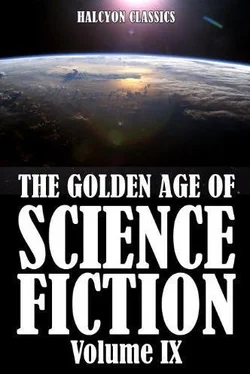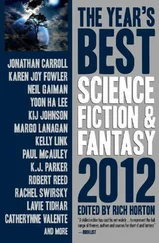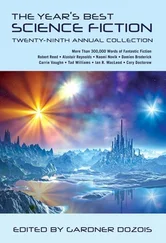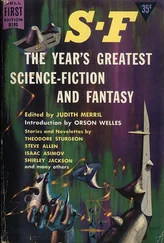“We are looking at it now under a high sun, but when the sun has only just risen sufficiently high to illuminate all those high mountains, whilst the lower surroundings are still in shadow, the great bay presents in the telescope the appearance of a brilliant luminous arch springing from the lighted part of the moon and extending far out over the dark part of the disc.
“Farther eastward, and lower down on the Ocean of Storms, you will observe what is admitted by all to be the very brightest large formation upon the moon, viz. Aristarchus—a ring-plain nearly thirty miles in diameter, the floor of which is 5000 feet below the surface level. It possesses a central mountain, very difficult to measure on account of the general brightness, but believed to be about 1300 feet high. Well-defined terraces are seen on the mountain walls enclosing the area, and many external ridges are connected with the walls, especially to the south. This formation is evidently covered with some substance which reflects light to a greater extent than that on similar formations; indeed it appears so bright that when the moon is new and the whole of this part of the disc is dark, Aristarchus can still be seen with a telescope, and this gave rise in the past to the idea that it was a volcano in actual eruption. The explanation is, however, more prosaic, because the mountain is really brought into view by earthshine on its bright covering. When the moon is new the earth is almost fully lighted on the side toward the moon, and sheds a faint light on the dark portion of its disc, thus producing the phenomenon known as ‘the old moon in the new moon’s arms.’
“Close to Aristarchus you will notice another ring-plain, which is called Herodotus, about twenty-three miles in diameter, with a floor 7000 feet depressed; but this formation is not nearly so bright as its neighbour. That high plateau between them is notable on account of the T-shaped cleft in it, which runs into that other long zig-zag cleft (in some parts two miles wide and 1600 feet in depth), whose direction changes abruptly several times in its length of over one hundred miles.
“Turning from this towards the south-west you will see the most majestic formation to be found upon the moon—the great ring-plain called ‘Copernicus,’ after the founder of our present system of astronomy. It is about sixty miles in diameter, only roughly circular in shape, and as it stands isolated upon the great ocean-bed it is most favourably situated for observation. A large number of very high ridges, separated by deep valleys, radiate from it in all directions to a distance of hundreds of miles, presenting the appearance of a grand system of buttresses to the mountain walls. These walls are high, and contain a very large number of peaks which, when seen through the telescope as they catch the sunlight, look like a string of bright pearls shining on the border of the ring. A peak on one side is 12,000 feet in altitude, on the other side is one only 1000 feet lower, whilst, rising from near the central part of the floor, are no less than five small mountain peaks. Owing to its size, brightness, and isolated position, this splendid ring-mountain can be seen from the earth without the aid of a glass; but even a field-glass will reveal much in this and similar formations which cannot be detected by the unaided eye.
“The Rev. T.W. Webb has termed Tycho, in the southern hemisphere, ‘the Metropolitan Crater of the Moon,’ but, in my opinion, Copernicus is, owing to its position and grandeur, much more worthy of that dignity. Tycho is fine in itself, but is not so favourably situated, being surrounded by other formations somewhat in the same way as St. Paul’s Cathedral is surrounded and shut in, for the most part, by other and meaner buildings.
“How much more should we appreciate the splendid proportions and majesty of our Metropolitan Cathedral if we could view it as an isolated building with a fine open space all around it!”
“I quite agree with that, Professor,” remarked John, “and I have always thought it a great pity that Sir Christopher Wren was not allowed to carry out his original plan in this respect.”
We were looking at the Carpathian range of mountains just to the northward of Copernicus, when M’Allister touched my arm, exclaiming, “Look, Professor, at all those tiny craters near the western side of Copernicus. Why, there are so many of them that the ground for miles round looks like a honeycomb, and in some places there are straight rows of them!”
“Yes,” I said, “this part of the lunar surface is simply riddled with tiny craterlets, and some of them are utilised as tests for the definition of our telescopes. I have heard it remarked that a map of this part of the moon presents almost the appearance of the froth on a glass of stout when it has settled down, the very numerous tiny air-bubbles of different sizes representing the craterlets; and really it does bear such a resemblance.
“Almost due east of Copernicus is another bright and isolated ring-plain named Kepler, after the celebrated astronomer. This is some twenty-two miles in diameter and surrounded by very bright streaks of light, extending in some directions over seventy miles, the whole nimbus of light covering an area of nearly ten thousand square miles. These really are streaks, not ridges, for, as you will see, nearly all the surface surrounding this formation is flat and level.
“Some of the streaks from Kepler radiate in the direction of Aristarchus, others towards Copernicus, cutting right through the rays from those formations. From this it is gathered that Copernicus was formed first, then Aristarchus, and Kepler still later on in the moon’s history.
“The surrounding wall of Kepler is comparatively low with respect to the lunar surface level, but the depth of the crater is nearly ten thousand feet below the mountain peaks. The whole formation is covered with the same light-reflecting material as the streaks which surround it.”
CHAPTER VI
THE SCENERY OF THE MOON’S SOUTHERN HEMISPHERE
I now directed M’Allister to steer across the lunar equator into the southern hemisphere, and our attention was soon attracted by a very large walled plain on the eastward side of our course.
John asked me what it was called, and I explained that it was named Grimaldi, being also well known to observers as the darkest tinted of all the large lunar formations. As seen from the earth it appears a narrow ellipse, but we could see its full width, which is 129 miles, the length being 148 miles. It is also noteworthy as one of the few plains which are convex in section, and it is so large that its area is equal to the combined area of the whole of the counties of England south of the line of the Thames, including Cornwall.
I showed M’Allister this formation on our map, where it appears only a narrow ellipse in consequence of the moon’s curvature, and pointed out how very different was its appearance now we could see over its whole extent. Other formations nearer to the moon’s limb appear still more foreshortened when viewed from the earth.
John here remarked that “these large ring-plains covered immense areas, and, now that we could actually see them, their magnitude was more impressive than anything we could have imagined from merely hearing or reading about them.”
“Yes, John,” I said, “from our altitude of more than ten miles above the lunar surface we command a much more extensive view and gain a better knowledge of details than we could obtain even if we landed on the moon. For instance, if we could stand down in the centre of one of those very large rings, we should imagine we were in the midst of a boundless open plain. The mountains all around us would be so distant that, owing to the sharp curvature of the lunar sphere, they would all be below the horizon, notwithstanding the fact that many of them are several thousands of feet in height. So, for all we could see of them, those mountains might be non-existent.
Читать дальше












